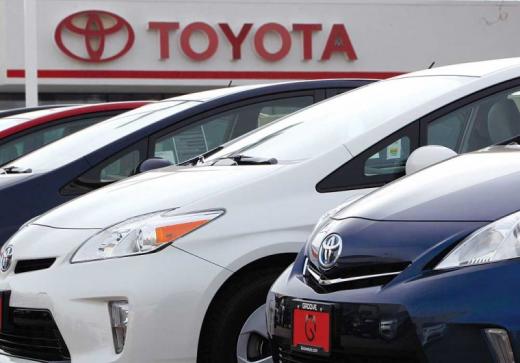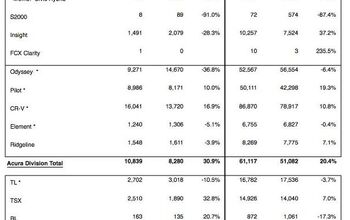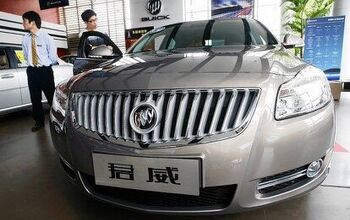Japan In June 2012: Up 43.6 Percent

Domestic sales of regular new cars, trucks and buses increased 40.9 percent in June, while sales of mini vehicles rose 48.4 percent on the year. Overall, Japan’s new motorvehicle market rose 43.6 percent on 505,342 units sold. The data compare with a post-tsunami June 2011.
According to data supplied by the Japan Automobiles Dealer Association JADA, sales of regular vehicles amounted to 317,152 units, with Toyota continuing its strong showing.
Mini vehicle sales Japan June ’12ManufacturerJune ’12June ’11YoYYTD ’12YTD ’11ChangeSuzuki54,40041,51531.0%316,507226,07440.0%Daihatsu67,35447,39242.1%380,079251,64151.0%Mitsubishi7,4598,856-15.8%47,42750,321-5.8%Subaru5,3136,529-18.6%46,83638,55021.5%Honda29,8418,747241.2%161,67664,414151.0%Mazda4,2263,19932.1%28,08723,12521.5%Nissan14,29410,56235.3%88,20869,92226.2%Toyota5,299021,580Other42100.0%231921.1%Total188,190126,80248.4%1,090,423724,06650.6%188,190 minivehicles were sold in June, the Japan Mini Vehicles Association said.
Total vehicle sales Japan June ’12ManufacturerJune ’12June ’11YoYMS June ’12MS June ’11Daihatsu67,66047,64042.0%13.4%13.5%Hino3,6871,712115.4%0.7%0.5%Honda75,00038,78793.4%14.8%11.0%Isuzu5,0872,75184.9%1.0%0.8%Lexus4,0813,7927.6%0.8%1.1%Mazda20,34213,54050.2%4.0%3.8%Mitsubishi11,94014,120-15.4%2.4%4.0%Mitsubishi Fuso3,4971,79794.6%0.7%0.5%Nissan56,90855,6752.2%11.3%15.8%Subaru13,27212,9232.7%2.6%3.7%Suzuki63,47748,30331.4%12.6%13.7%Toyota154,08787,67175.8%30.5%24.9%UD Trucks91258256.7%0.2%0.2%Other25,39222,53312.7%5.0%6.4%Total505,342351,82643.6%Overall, the market was up 43.6 percent to 505,342 units.
Japan Big Three June ’12GroupToyota Motor CoNissanHondaUnits June ’12225,43456,90875,000Units June ’11137,02355,67538,787Units YoY64.5%2.2%93.4%MS June ’1244.6%11.3%14.8%MS June ’1138.9%15.8%11.0%Units YTD ’121,295,997366,619430,948Units YTD ’11748,952242,978245,695MS YTD ’1244.0%12.4%14.6%MS YTD ’1139.0%12.7%12.8%YoY YTD73.0%50.9%75.4%On a group level, Toyota dominates the Big 3 with strong growth and regained market share. Honda also recovered strongly and gained share. Nissan continues to lose share at home.

Bertel Schmitt comes back to journalism after taking a 35 year break in advertising and marketing. He ran and owned advertising agencies in Duesseldorf, Germany, and New York City. Volkswagen A.G. was Bertel's most important corporate account. Schmitt's advertising and marketing career touched many corners of the industry with a special focus on automotive products and services. Since 2004, he lives in Japan and China with his wife <a href="http://www.tomokoandbertel.com"> Tomoko </a>. Bertel Schmitt is a founding board member of the <a href="http://www.offshoresuperseries.com"> Offshore Super Series </a>, an American offshore powerboat racing organization. He is co-owner of the racing team Typhoon.
More by Bertel Schmitt
Latest Car Reviews
Read moreLatest Product Reviews
Read moreRecent Comments
- Dartdude Having the queen of nothing as the head of Dodge is a recipe for disaster. She hasn't done anything with Chrysler for 4 years, May as well fold up Chrysler and Dodge.
- Pau65792686 I think there is a need for more sedans. Some people would rather drive a car over SUV’s or CUV’s. If Honda and Toyota can do it why not American brands. We need more affordable sedans.
- Tassos Obsolete relic is NOT a used car.It might have attracted some buyers in ITS DAY, 1985, 40 years ago, but NOT today, unless you are a damned fool.
- Stan Reither Jr. Part throttle efficiency was mentioned earlier in a postThis type of reciprocating engine opens the door to achieve(slightly) variable stroke which would provide variable mechanical compression ratio adjustments for high vacuum (light load) or boost(power) conditions IMO
- Joe65688619 Keep in mind some of these suppliers are not just supplying parts, but assembled components (easy example is transmissions). But there are far more, and the more they are electronically connected and integrated with rest of the platform the more complex to design, engineer, and manufacture. Most contract manufacturers don't make a lot of money in the design and engineering space because their customers to that. Commodity components can be sourced anywhere, but there are only a handful of contract manufacturers (usually diversified companies that build all kinds of stuff for other brands) can engineer and build the more complex components, especially with electronics. Every single new car I've purchased in the last few years has had some sort of electronic component issue: Infinti (battery drain caused by software bug and poorly grounded wires), Acura (radio hiss, pops, burps, dash and infotainment screens occasionally throw errors and the ignition must be killed to reboot them, voice nav, whether using the car's system or CarPlay can't seem to make up its mind as to which speakers to use and how loud, even using the same app on the same trip - I almost jumped in my seat once), GMC drivetrain EMF causing a whine in the speakers that even when "off" that phased with engine RPM), Nissan (didn't have issues until 120K miles, but occassionally blew fuses for interior components - likely not a manufacturing defect other than a short developed somewhere, but on a high-mileage car that was mechanically sound was too expensive to fix (a lot of trial and error and tracing connections = labor costs). What I suspect will happen is that only the largest commodity suppliers that can really leverage their supply chain will remain, and for the more complex components (think bumper assemblies or the electronics for them supporting all kinds of sensors) will likley consolidate to a handful of manufacturers who may eventually specialize in what they produce. This is part of the reason why seemingly minor crashes cost so much - an auto brand does nst have the parts on hand to replace an integrated sensor , nor the expertice as they never built them, but bought them). And their suppliers, in attempt to cut costs, build them in way that is cheap to manufacture (not necessarily poorly bulit) but difficult to replace without swapping entire assemblies or units).I've love to see an article on repair costs and how those are impacting insurance rates. You almost need gap insurance now because of how quickly cars depreciate yet remain expensive to fix (orders more to originally build, in some cases). No way I would buy a CyberTruck - don't want one, but if I did, this would stop me. And it's not just EVs.


































Comments
Join the conversation
Is Nissan just not on its Japan game? Perhaps too focused on globalism? This surprises me.